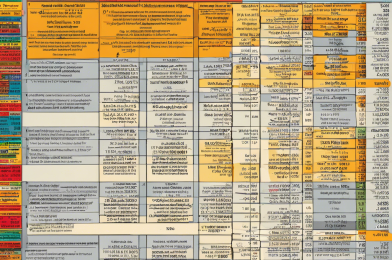Canadians have access to a variety of financial tools to help them save for the future and reduce their tax burden. Two of the most popular options are the Tax-Free Savings Account (TFSA) and the Registered Retirement Savings Plan (RRSP). While both offer significant benefits, there are important differences between the two that individuals should understand to make informed decisions about their financial planning. This article will outline the features of the TFSA and RRSP, including their respective advantages and limitations, to help readers determine which option is better suited to their needs.
The TFSA and RRSP are both registered accounts that offer Canadians a way to save money while reducing their taxable income. However, the similarities end there. The TFSA, as the name suggests, is a savings account that allows for tax-free growth of investments. Contributions to a TFSA are not tax-deductible, but any income earned within the account, including capital gains, dividends, and interest, is tax-free, even upon withdrawal. This makes it an attractive option for those who want to save for short-term goals or who want flexibility in accessing their savings. There are no restrictions on withdrawals from a TFSA, and individuals can withdraw funds at any time without incurring penalties or taxes.
On the other hand, the RRSP is primarily a retirement savings vehicle. Contributions to an RRSP are tax-deductible, which lowers an individual’s taxable income and provides tax savings. The invested funds can then grow tax-free within the RRSP until withdrawal. However, withdrawals from an RRSP are taxable as regular income. This “tax deferral” feature of RRSPs is designed to encourage Canadians to save for their retirement. To further encourage long-term retirement savings, the government imposes restrictions and penalties on early withdrawals from RRSPs.
One key difference between the TFSA and RRSP is contribution room. Individuals 18 years and older can contribute to a TFSA, with a lifetime contribution limit of $81,500 as of 2023. The contribution limit for RRSPs, on the other hand, is generally 18% of the previous year’s earned income, up to a maximum amount, which is $29,210 for 2023. Unused contribution room can be carried forward indefinitely for both accounts.
Another difference lies in the treatment of withdrawals. While TFSA withdrawals are not taxed and can be replaced in the following year, creating additional contribution room, RRSP withdrawals are included in taxable income and cannot be directly contributed back. There are, however, provisions for certain types of withdrawals from RRSPs, such as the Home Buyers’ Plan and the Lifelong Learning Plan, which allow individuals to withdraw funds for specific purposes without immediate tax consequences.
The TFSA and RRSP each have their own unique benefits and considerations. When deciding which account is right for you, it’s important to assess your financial goals and circumstances. If you’re saving for short-term goals and want flexibility to access your savings without tax implications, then a TFSA may be more suitable. On the other hand, if you’re focused on maximizing tax savings for retirement and can commit to keeping your savings untouched until retirement, then an RRSP could be a better option. It’s worth noting that you can also choose to contribute to both accounts to diversify your savings strategy and maximize the benefits of each.
Individuals should also consider their current income and expected income in retirement when deciding between a TFSA and RRSP. If you expect your income to be higher in retirement, contributing to an RRSP while you’re in a lower tax bracket can be advantageous. In contrast, if you’re in a higher tax bracket currently, you may benefit more from the tax-free growth and flexibility offered by a TFSA. Consulting a financial advisor can help individuals assess their situation and determine the best approach for their financial goals.
In conclusion, both the TFSA and RRSP are powerful tools that can help Canadians achieve their financial goals. Understanding the differences between the two accounts is essential to making the most of these opportunities. Whether you choose to contribute to a TFSA, an RRSP, or both, the key is to start saving and take control of your financial future. By assessing your goals, time horizon, and tax situation, you can make informed decisions about your savings strategy and work towards a secure and prosperous future.










